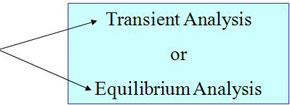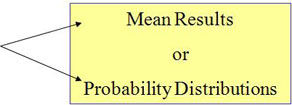Results - From whose point of view :
The results obtained by analysis (or simulations) may be provided from two different points of view -

Both points of view are important. The Customer's Point of View effectively gives the performance that the customer will see if he/she arrives to the queue for service. This indicative of how good or bad the customer will perceive the service system to be. The Service Provider's Point of View gives the performance results from the point of view of the person or organization which is setting up the service facility. Its main consideration will be the efficiency with which the system resources (i.e. the servers and/or the buffers) are being utilized.
It is also important to note that the two viewpoints are inherently conflicting! Typically a queue whose servers are kept busy most of the time will also be one where arriving customers will have to wait a long time for service.
Performance Parameters from the Customer's Point of View :
Parameters of interest for a customer arriving to the queue for service
(Service Parameters)
 |
 |
 |
The performance parameters shown above may be computed either as a function of time, given an initial condition (i.e. Transient Analysis) or under equilibrium conditions (i.e. Equilibrium Analysis). Equlibrium analysis is generally much easier and more practical to do than transient analysis.
For parameters like queueing delay, total delay, number in system or number waiting in queue, one would at least like to compute the mean results (first moment and, if possible, second moment). In some cases, it may also be possible to get the probability distributions of these quantities.